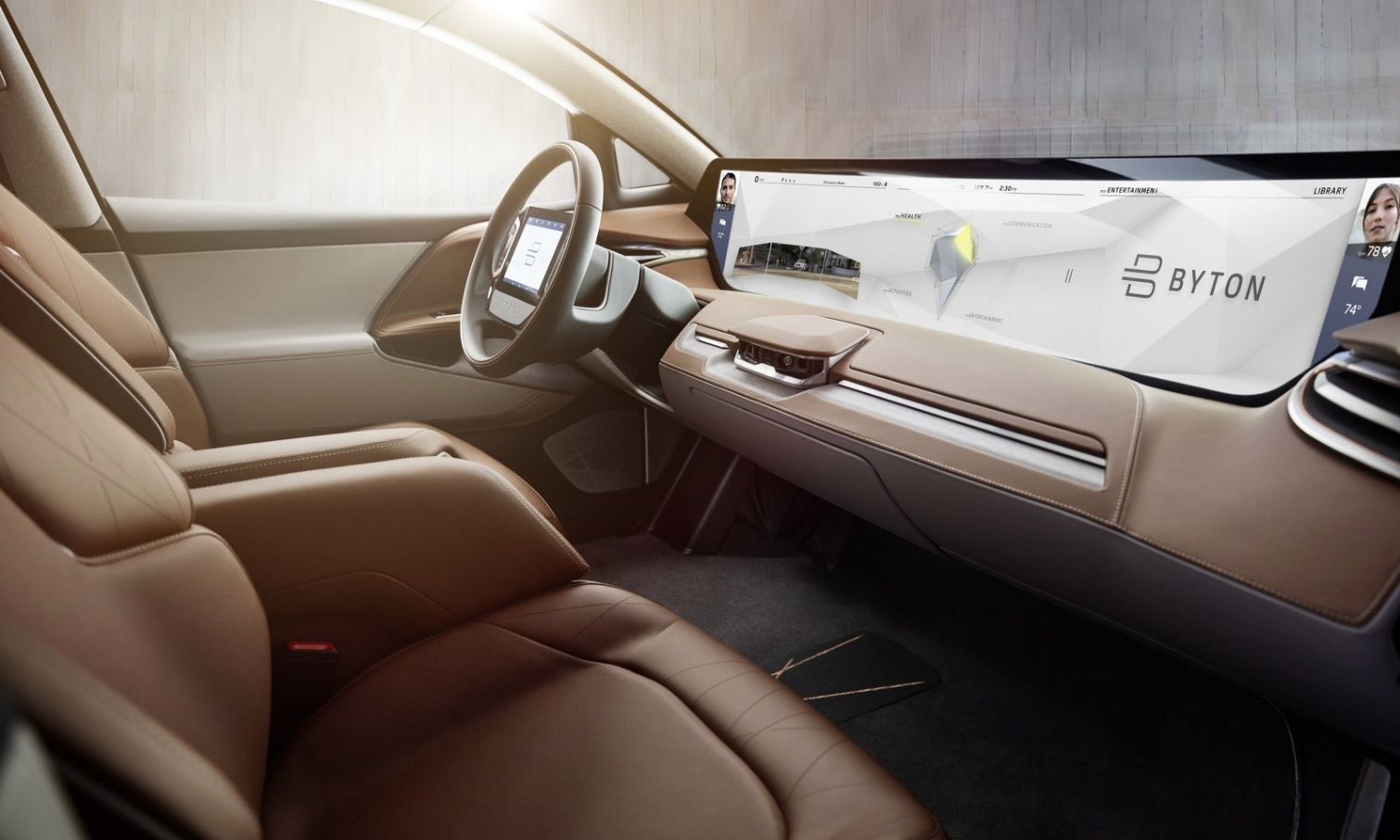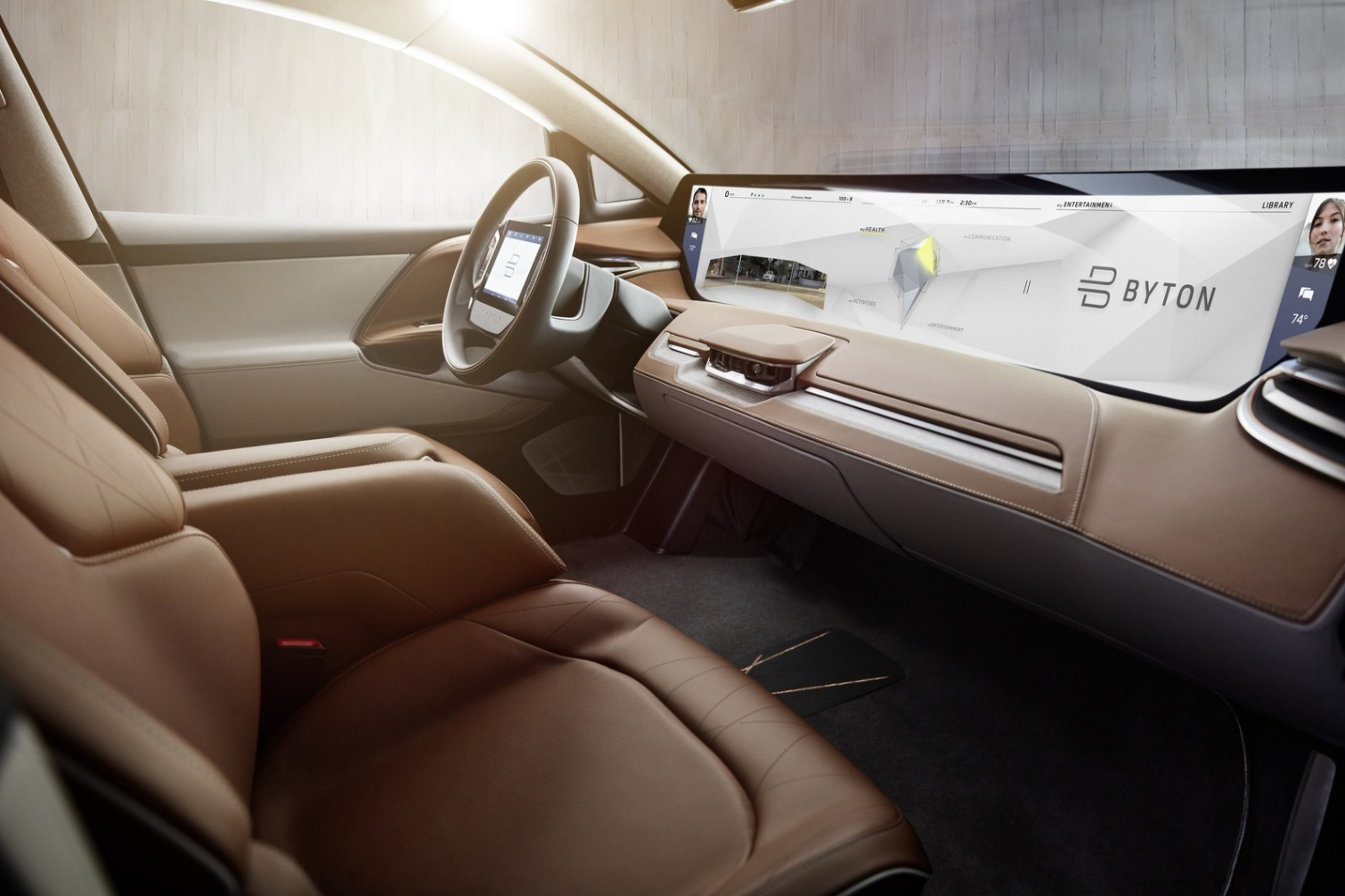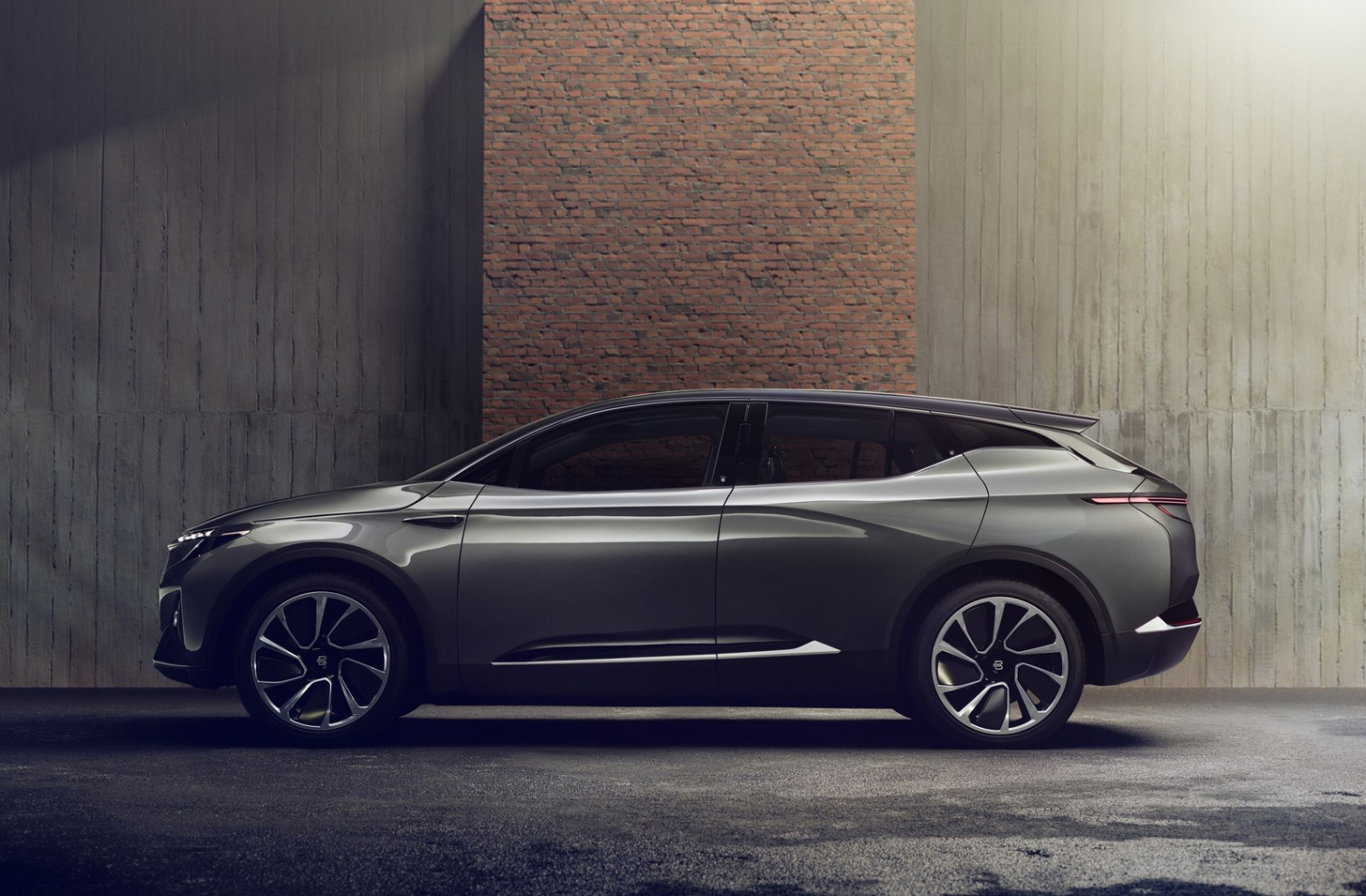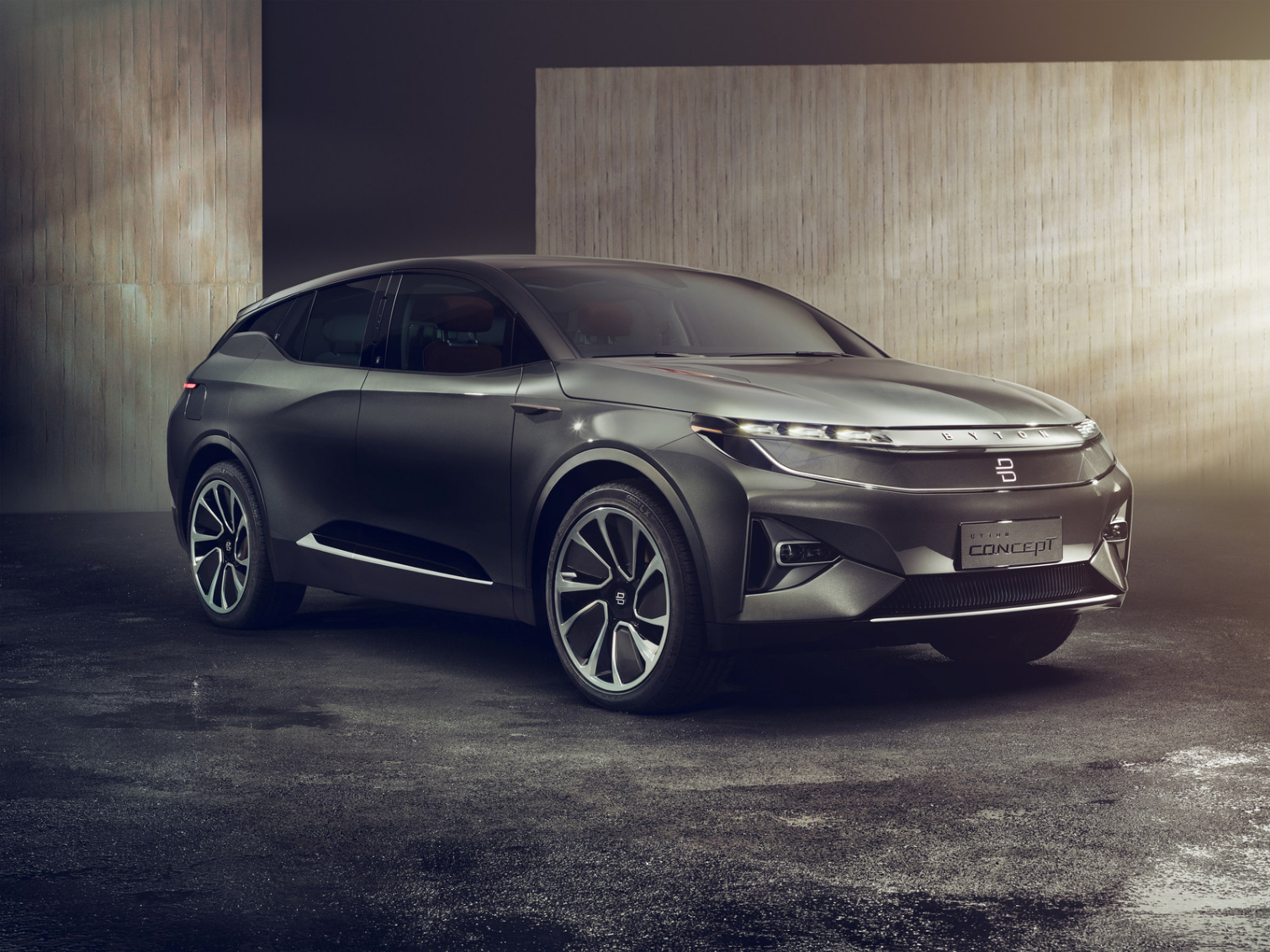Byton's Electric SUV Looks Like the Future of Cars
The Byton electric SUV features a 49-inch touch screen console, facial recognition, voice commands and invisible door handles.

The Byton electric SUV is drawing a lot of eyes at CES 2018, but you wouldn't guess that from looking at its exterior, as the ginormous screen on its dashboard is the true star of this automobile. Announced today (Jan. 8), the Byton is less about autonomous driving (though it promises some self-driving capabilities) than it is about the car as a smart device. The Byton will cost $45,000 and up and will be coming to the U.S. and Europe in 2020.

But, seriously, just check out that dashboard for a second. It's a 49 x 9.8-inch console that Byton is dubbing the Shared Experience Display, which will be supported by a trio of additional displays, one of which is in the steering wheel. This is the kind of amazing interface that makes you think the car belongs in the distant future more than during the next presidential election campaign.
MORE: 8 Biggest Tech Trends to Watch at CES
On the outside of the Byton, the SUV's cameras will use facial recognition to unlock the doors. Once the car recognizes you, it will automatically adjust your seat to your preferences. That's just the tip of the jaw-dropping details, as this car will feature something Byton calls an "invisible door handle," which we cannot wait to see for ourselves.
At CES, Byton will demonstrate the SUV's Health, Communication, Entertainment and Activities modes, showing off how this car is as much a giant smartphone with four wheels as it is the future of automobiles. It will track user activity by connecting to users' smart devices to monitor health statistics such as weight, heart rate and blood pressure, as well as give fitness advice.

The Byton has many touch screens, but it will also let users perform operations via voice commands, and feature biometric identification and gesture-based controls. This car will also feature Alexa integration, as well as integrated audio and video content from Amazon. Just don't expect the Byton to be a fully self-driving car.
In a press release, Byton says its 2019 production units (which will debut in China before they arrive in the U.S. and Europe) will feature Level 3-caliber Advanced Driver Assistance Systems (ADAC) technology, placing it in the middle of the ADAC spectrum and meaning that the driver has to be ready to take control in case of an emergency.
Sign up to get the BEST of Tom's Guide direct to your inbox.
Get instant access to breaking news, the hottest reviews, great deals and helpful tips.
Level 4 capability, which is referred to by some as providing fully autonomous driving, and means the driver can safely take a nap, or even move to the back seat, will arrive in a software update in 2020.

Inside, the Byton is the definition of luxury, with a wooden floor, leather seats, and front seats that rotate 12 degrees inwards for a more intimate shared space between passengers. Its individually-adjustable rear seats make it so even the loudest backseat driver gets a comfy experience.
The Byton reportedly features a maximum range of 323 miles on a single charge, and measure 15.9 feet long, with a wheelbase of 9.6 feet and a wheel size of 22 inches. An antenna integrated into the roof is designed for a 5G future, with data transfer rates of up to 10 gigabytes per second.
Byton announced its ambitions for two other cars: a sedan and multi-purpose vehicle, to be built on the same platform that the SUV uses.

Henry is a managing editor at Tom’s Guide covering streaming media, laptops and all things Apple, reviewing devices and services for the past seven years. Prior to joining Tom's Guide, he reviewed software and hardware for TechRadar Pro, and interviewed artists for Patek Philippe International Magazine. He's also covered the wild world of professional wrestling for Cageside Seats, interviewing athletes and other industry veterans.
-
andrew.dollins Okay I can see a lot of lawsuits from distracted drivers. I bet the screen is cool, but people need to pay attention to driving the car not playing video games.Reply -
Brad_53 Yes, distracted driving is what came to mind right away for me too. IF this screen isn't distracting, then what is it doing there?Reply -
carlandkathie Nice looking exterior, put a 450 hp V-8 under the hood and I would buy one.. other wise, when you take the driving experience away from my control I'm not interested, it might as well be a pogo stick ...Reply
